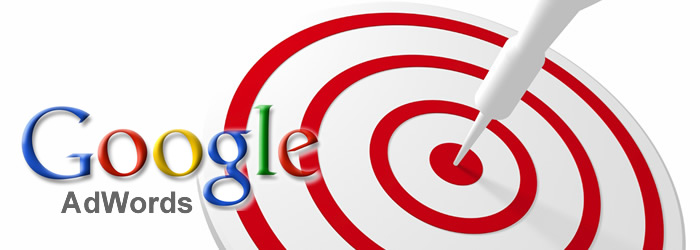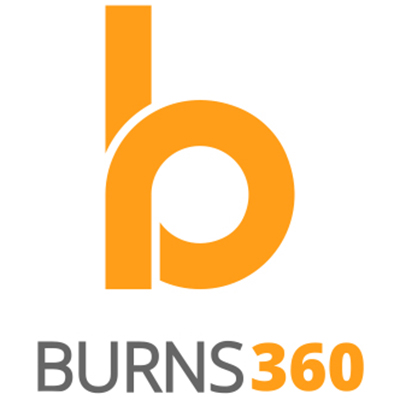
The ABCs of Google Adwords (Part One)
Digital Marketing Manager
Burns360
Let’s backtrack to just a few short years ago when SEO was thought to be the holy grail of digital marketing. Good grief can things change in a hurry.
These days, SEO is moving out of the spotlight, and SEM—search engine marketing—seems to be taking center stage. Some digital marketers even claim that search engine marketing, or “paid search”, replaces the need for organic search optimization altogether.
As a digital marketer myself, the first thought that comes to my mind when I hear of some new marketing “breakthrough” is, “oh no, another expense?” In fact, early in my career I was more than skeptical about SEM. Why pay for a placement when you can organically rank your site?
But now I’ve learned that both have their place in our digital world.
Organic search optimization is the primary way to tell “the story of a company” as a whole, while SEM is much more focused. The main goal of an SEM campaign is to “sell you on a company’s best offer—now.”
Today, SEM is often the tool of choice to get your website high up in the search results page; to drive highly qualified traffic to a landing page; and even to maximize your leads or conversions. Even recently, Google’s search engine results page (SERP) has been redesigned to give paid results higher placement while also giving it a cleaner, much more organic look.
So let’s take a deeper look at why SEM is on the ascent. Each search engine has its own paid search product. For the purposes of this primer, however, I’ll walk you through how to begin with the most widely used one—Google Adwords.
How to get started with Google Adwords
Step 1: Create your custom landing page
A good SEM campaign actually doesn’t start with Adwords—it starts by creating a strong landing page on your website. After all, before you spend money, you need to do all you can to make sure your investment pays off.
A number of great articles are available to help with the details of building an effective landing page. For the sake of this discussion, just know that for SEM campaigns, a focused, narrow landing page typically performs the best. When starting on your landing page content and design, ask yourself these questions:
- What are we trying to get the user/visitor to do? Fill out a form, call a phone number, etc.?
- Does the design make it as easy and visible as possible for a user to do what you want?
- Does the copy succinctly describe the offering? Does it effectively and efficiently make the case of why the user should take the action you intend?
- Are there any extraneous links, images and other content that might take the user’s attention away from where you want it to be? If so, eliminate them.
Make your landing page simple, attractive and descriptive—but to the point!
Step 2: Create a Keyword List
The next step is to create a keyword list based on the copy you’ve written for your landing page. Your keyword list should include words and phrases you will use to bid on in Google Adwords. If your bid for a given phrase is higher than the competition’s, or Google scores your site as high quality for a particular keyword, your ad is displayed more prominently.
It’s easy to get lost in this part of the process because it’s the most detail-intensive. Google Adwords allows for a very thorough amount of customization and control over what keywords you buy and how you want to purchase them.
Here’s a few basics on how to get a keyword list started:
- Start small. A lot of sophisticated campaigns have literally thousands of keywords that are bought and managed daily. Sure, it’s tempting to begin with a big list, but I recommend going with a few core keywords first. For example, if you’re trying to sell apples in Dallas, it’s enough to just focus on phases that combine the two primary words, “Apples” and “Dallas”. Examples include: “Apple sellers in Dallas”, “Where to buy apples in Dallas”, “Best apple fruits in Dallas”, and so on.
- When in doubt, use phrases. Taking the “apple seller” example above, you most likely wouldn’t want to purchase the word “Apple” alone. It’s too broad, and you’d be competing against a certain tech giant if you do (and hint, hint, they’re going to win). Even if you somehow managed to place in the “Apple” bid war, visitors might not want to find apples in Dallas specifically. It’s important to put yourself in the mind of your user. Ask yourself: “What phrase would I type if I wanted to accept an offer now?” More often than not, it’s a phrase, rather than a single word.
Keeping with phrases, try using the phrase match mechanic rather than a standard broad match. This is done by putting your keyword in quotation marks. It takes advantage of Google’s algorithm in looking for “close words” that match your original query. For example, if you purchase “Apple sellers in Dallas”, you’d also be matched for “Apples sold in Dallas”, and the like. - Use Google’s Keyword Tool. Once you’ve exhausted the obvious keyword choices, take Google’s Keyword tool for a spin. By inputting the keywords you’ve already generated, it’ll create more suggestions for you to consider adding to your list. These suggestions can be synonyms or acronyms of the keywords you searched. Not all of it will be applicable, of course, but it does help in populating your list with keywords you may not have considered.
Step 3: Working with text ads.
Text ads with Google are short, sweet and to the point. The headline has a limit of 25 characters, while the display URL and both description lines have a limit of 35 characters. Below is an example of a text ad that is promoting (appropriately enough) “how to create a text ad”.

Due to Google’s limit, most text ads are made to be punchy, as is the one above. “Test Now Before It’s Too Late” or “We Deliver Fast.”
Applying this logic to the “apple seller” above, you can create precise titles, such as “Tasty Apples in Dallas.” For the two description lines, I recommend reserving one line to expand on your product (example: Why is it tasty? Is it locally sourced? Is it in season?). The other line should be the call-to-action. “Buy now”, “Come to our store now”, “Limited time”, etc. Even better if you can state a discount, as that gives the user a timely incentive to buy now.
Step 4: Launch!
For beginners, I recommend using Google’s auto bid feature for the campaign, but also setting a daily dollar limit on what to spend. I would start low and increase your budget or limit, in case you’re not seeing enough traffic.
Now, you’re ready to launch your campaign!
Interested in more? Come back next week for a follow-up article from this series—the most common pitfalls people make when running an SEM campaign (and how you can avoid them!).
Also, be sure to check out our highlight on Retalix if you’re looking for even more digital inspiration.
Any questions? Leave a message below and we’ll be happy to get back to you!


